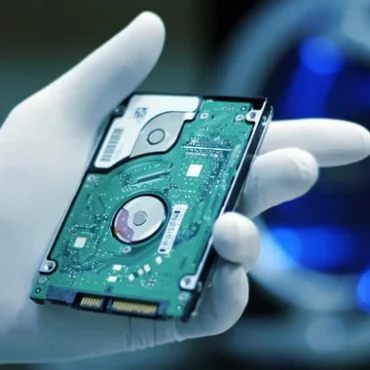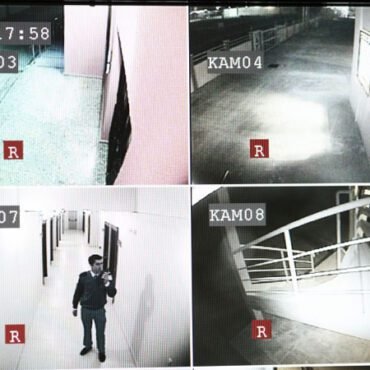In the digital-first world, data is the new currency. From personal memories such as photos, videos, and important documents to critical corporate databases and financial records, everything is stored in digital form. Among various storage devices, hard disk drives (HDDs) have been one of the most widely used for decades.
But what happens when the very device that safeguards this data fails or gets damaged? Panic sets in. Fortunately, data recovery from a damaged hard disk is possible—but the success depends on the type of damage, the extent of corruption, and the recovery methods used.
This comprehensive guide will walk you through:
-
Types and causes of hard disk damage
-
Signs that your hard disk may be failing
-
Step-by-step methods of recovering data
-
Tools and professional techniques used
-
Challenges faced in recovery
-
Preventive measures to avoid permanent data loss
What Causes Hard Disk Damage?
A hard disk is a complex device with mechanical, electrical, and magnetic components. Even a small defect can result in data inaccessibility. Damages can be broadly classified into two categories:
1. Physical Damage
Physical failure occurs when hardware components of the disk are damaged. Common causes include:
-
Head Crash: The read/write head accidentally comes into contact with the spinning platter, scratching it and corrupting data.
-
Spindle/Motor Failure: If the motor fails, the platter won’t spin, making the disk unreadable.
-
PCB (Printed Circuit Board) Damage: Power surges, overheating, or burnt chips can destroy the drive’s controller board.
-
Environmental Factors: Water damage, fire, smoke, or accidental dropping of the disk.
-
Wear and Tear: HDDs have a limited lifespan (usually 3–5 years), after which mechanical parts degrade.
2. Logical Damage
Logical issues affect the data structure but not the physical hardware. These are often recoverable with specialised tools. Common causes include:
-
Corrupted File System: Errors in NTFS, FAT32, exFAT, etc.
-
Partition Table Corruption: Entire partitions vanish or become inaccessible.
-
Bad Sectors: Magnetic spots on platters fail to hold data.
-
Virus/Malware Attacks: Ransomware or malicious programs corrupt or encrypt data.
-
Accidental Deletion/Formatting: Human error is one of the most common causes.
Early Warning Signs of Hard Disk Failure
Recognising the signs of damage early can save your data:
-
Clicking, grinding, or whirring noises (mechanical failure).
-
Frequent system crashes, blue screen errors, or failure to boot.
-
Disappearing files and folders.
-
Disk not being recognised by BIOS or OS.
-
Error messages like “Drive not accessible” or “CRC error.”
-
Extremely slow performance when accessing files.
If you notice these symptoms, stop using the disk immediately. Continued usage may overwrite or worsen the damage, reducing recovery chances.
How Data Recovery from a Damaged Hard Disk Works
The method of recovery depends on whether the damage is logical or physical.
Step 1: Initial Diagnosis
-
Check whether the disk is detected by the computer.
-
Run basic diagnostics using tools like CHKDSK, SMART monitoring utilities, or CrystalDiskInfo.
-
Identify whether the issue is physical (not spinning, making noise) or logical (not booting, missing partitions).
Step 2: Recovery from Logical Damage (Software-Based)
If the hard disk is still recognised by the system:
Step 3: Recovery from Physical Damage (Hardware-Based)
When the disk suffers mechanical or electronic failure:
-
Professionals open the drive in a Class 100/10,000 Clean Room to prevent dust contamination.
-
Techniques include:
-
Head Swap: Replacing the damaged read/write head with donor parts.
-
Platter Transplantation: Moving platters into a working donor HDD for extraction.
-
PCB Repair/Replacement: Using an identical controller board and reprogramming firmware.
-
Motor Replacement: In rare cases, if the spindle is damaged.
-
Specialised imaging tools like DeepSpar Disk Imager, Atola Insight, or PC-3000 are used to create a sector-by-sector copy before attempting recovery.
Step 4: Forensic Data Recovery
When the data is needed for legal, investigative, or corporate purposes:
-
Tools such as EnCase, FTK, Autopsy, Tableau Forensic Imager TX1, and Forensic Falcon neo are used.
-
Ensures integrity and chain of custody for admissibility in court.
-
Even deleted, corrupted, or hidden files can be recovered without tampering with original evidence.
Challenges in Hard Disk Data Recovery
Recovering data from a damaged hard disk is a complex process that involves multiple obstacles. Each challenge affects the recovery success rate, cost, and time.
1. Severe Physical Damage to Platters
-
Problem: The platter is the disk’s core data storage medium. If it is scratched, burnt, or warped due to a head crash, fire, or water, the magnetic coating holding data is lost permanently.
-
Why It’s Challenging: Once the data layer is destroyed, no software or tool can reconstruct it. Only partial recovery may be possible by reading undamaged sectors.
-
Example: A laptop dropped from a height causes the head to scratch the platter, leaving permanent circular marks—data from those regions is unrecoverable.
2. Encrypted Drives
-
Problem: Modern drives and operating systems allow full-disk encryption (e.g., BitLocker, FileVault, VeraCrypt). Without the decryption key or password, even forensic labs cannot access raw data.
-
Why It’s Challenging: Recovery tools can extract encrypted blocks, but without the correct credentials, the content is useless.
-
Example: Corporate laptops often have encryption enabled. If the drive fails and the IT team doesn’t have recovery keys, data access is impossible.
3. Overwritten Data
-
Problem: When new data is written to the same sectors where old files existed, the previous data is overwritten and destroyed.
-
Why It’s Challenging: Unlike deleted files (which are just “marked free”), overwritten sectors contain entirely new binary content, making original files unrecoverable.
-
Example: Installing a new OS after accidental deletion often wipes out previous user files beyond recovery.
4. DIY (Do-It-Yourself) Recovery Risks
-
Problem: Many users attempt to fix damaged disks by freezing them, tapping them, or opening them outside of a clean room.
-
Why It’s Challenging: Such actions can worsen the problem—dust can contaminate platters, or makeshift PCB replacements may fry components.
-
Example: A user opens a drive in normal room conditions. Microscopic dust scratches the platter surface, reducing recovery chances to zero.
5. Firmware Corruption
-
Problem: Modern HDDs have embedded firmware that controls how the drive communicates with a computer. If this firmware gets corrupted, the drive may not even spin or be recognised.
-
Why It’s Challenging: Firmware repair requires advanced tools like PC-3000 and deep technical knowledge.
-
Example: A sudden power surge corrupts the firmware modules, leaving the disk undetectable.
6. Environmental Exposure
-
Problem: Fire, flood, or moisture can severely damage both electronics and platters.
-
Why It’s Challenging: Water exposure may cause oxidation, rust, or short circuits. Fire exposure may deform the platters beyond repair.
-
Example: After a house fire, a charred HDD has warped platters. Recovery is extremely limited and may only yield partial data.
7. High Costs and Specialised Equipment
-
Problem: Recovery requires clean rooms, donor parts, and specialised forensic tools. These are expensive and not widely available.
-
Why It’s Challenging: Even if data can be recovered, the cost may exceed what individuals or small businesses are willing to pay.
-
Example: Physical recovery of a severely damaged HDD can cost between ₹25,000 and ₹1,00,000, depending on complexity.
Conclusion
A damaged hard disk does not always mean permanent data loss. With the right knowledge, tools, and professional expertise, a significant amount of data can often be recovered. However, the chances of recovery decrease with improper DIY attempts and delayed intervention.
The key takeaway?
-
Act quickly if your hard disk shows warning signs.
-
Do not attempt risky home repairs.
-
Trust professionals like Hawk Eye Forensic to maximise your data recovery chances.
And remember—regular backups are your best defence against unexpected disk failures.





Post comments (0)